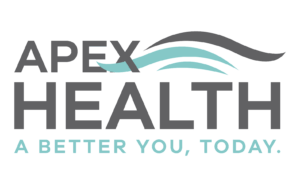Bone Spurs
As we get older, the discs and the joints of our spines and other bony structures undergo changes; some of these changes are degenerative in nature. While degeneration occurs even in the healthiest of people, it can be encouraged by a number of things such as poor nutrition, an injury, or bad posture. Bone spurs […]
Massage Therapy
Therapeutic massage involves manipulating the soft tissues of the body to prevent and alleviate pain, discomfort, muscle spasm, and stress. As in many kinds of therapy, therapeutic massage is one part of your overall chiropractic treatment plan. Massage therapy: Alleviates headache-associated pain. Helps improve your ability to walk with a normal and balanced gait. Helps […]
Jaw Pain
Pain in the jaw comes from a wide variety of things. Sometimes jaw pain is caused by an injury. In many cases, however, jaw pain is caused by a disorder of the temporomandibular joint (TMJ), the ball-and-socket joint on each side of your jaw. This joint connects the lower jaw to the skull near the […]
Osteoporosis
Osteoporosis is a gradual disintegration of bone and it can have a devastating impact on the joints and vertebrae of your spine. Osteoporosis causes the loss of mass and density in bones, making them highly susceptible to fractures. If the bones in your spine become weak and spongy, your spine gradually compresses, sometimes impinging nerves […]
Carpal Tunnel Syndrome
Carpal tunnel syndrome is a progressive and sometimes painful joint disorder caused by a compression of the median nerve of your hand. The compression causes swelling, which exerts pressure on the nerves. Carpal tunnel syndrome is probably the most common source of wrist pain. Symptoms may include soreness, numbness or tingling, or a burning sensation. […]
Mowing
If you have asthma or allergies, wear a mask Stand as straight as possible, and keep your head up as you rake or mow. Try to mow during the early morning and early evening hours, when the sun is not so hot. Drink plenty of liquids to keep your muscles hydrated. Protect yourself by wearing […]
Treatments for Migraines
Some recent studies have shown that patients suffering from chronic headaches and migraines may benefit more from long-term chiropractic care than drug therapy alone. For headaches that originate in the cervical (neck) area, chiropractic treatment, such as spinal manipulation, has been shown to be quite effective. A 2001 Duke University study, for example, found that […]
What is Scheuermann’s Disease?
A hunchback appearance of the spine maybe a sign of Scheuermann’s disease, a condition caused by an enlargement or deformity of the round back portion of the thoracic spine. People with Scheuermann’s disease have wedge-shaped vertebrae in their upper spine, which is caused by the front of the upper spine not developing as quickly as […]
Treatments for Sleep Apnea
Mechanical manipulation can offer some relief for people suffering from sleep apnea. Manipulation may improve the function of the muscles in your chest wall, and thus, help you breathe more easily and boost the oxygenation of your blood during sleep. In addition, manipulation can lower pain and restlessness and improve the reflexes of your spinal […]
Whiplash
Whiplash is probably one of the most misunderstood and misaligned kinds of injuries; people involved in automobile accidents often suspect they have whiplash if they feel any kind of soreness in their neck. This is not to diminish the fact that whiplash is quite a common and potentially serious kind of injury incurred in automobile […]
